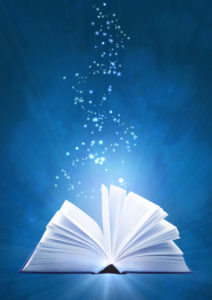Pop Culture Silver Linings
Here at Words by a Pro, we work with narratives. It’s our job to write stories surrounding brands. Orders often run along the lines of “informative but entertaining” or “professional but accessible.”
Occasionally we’ll receive a client looking for copy that’s a bit edgier, or sometimes a business in a technical field wants a rigorously technical piece. At the end of the day, however, companies seeking our services are usually looking to leave most of the creative aspect of their marketing materials to our team and so we’re left with major decisions regarding the style and tone of a client’s copy. It’s part of what we do and love, and in order to do it well, we’re tasked with the responsibility of keeping on top of trends to know the types of stories that they want to hear.
Given that marketing is the lifeline of entertainment, there are clear lessons to be learned about consumer preferences from reviewing the types of entertainment they consume.
The Dark Ages of Pop
Back in 2005, director Christopher Nolan made box office history with his grim re-envisioning of the Batman franchise. Aside from its tremendous commercial success, Batman Begins was a blockbuster that left its mark on the zeitgeist for years to come. In fact, ever since the mid-2000s, the words “dark” and “gritty” seem to be mandatory buzzwords in at least 60% of all Hollywood board meetings.
Staying true to that trend, over the course of the last ten years American hearts and minds have been stolen by a serial killer with a heart of gold, a balding chemistry teacher turned sociopathic meth dealer, and an ensemble cast of sadistic, plotting, homicidal megalomaniacs. That’s hardly an exhaustive list of modern anti-hero stories and with gritty reboots of everything including children’s fairytales, it’s hard to deny that pop-culture has developed a penchant for veering into the pitch black.
In a certain light, the trend toward dark storytelling was a reaction to the upbeat, feel-good bubblegum pop vibes of the 90s. Audiences, especially young people, were oversaturated with stories where the good guys always won, things always happened for a reason, and there was always a lesson to be learned. Over the last decade, moral complexity, absurdism, and anti-heroes have dominated pop-culture in large part because they’re all tropes that felt subversive, provocative, and fresh.
In another consideration, given that our news media has been saturated with violence, fear, and uncertainty for nearly two decades, it shouldn’t come as a surprise that our entertainment has also taken a dark turn in reflection of our collective psyches.
A New Hope
Our collective psyches have also grown ever so tired of it all. Once again, audiences over the course of almost twenty years have grown accustomed to moral greys, hyperviolence, and bleak realism in countless popular mediums. All those angsty expressions of the ills of the human condition will always have a certain appeal to successive generations of hormonal young people figuring things out, but the extent to which grim realism factors into the zeitgeist at large is likely on the decline.
Although we’re divided on what to be afraid of, we all seem to be unified in a general sense of fear and uncertainty, as well as a need for decisive action. As we witness a period of massive instability and monumental shifts across the globe, a huge number of people are deeply worried. What they need more than anything is a moment out of their day to stop, take a deep breath, and feel like things are going to be okay.
Precisely what makes people feel safe varies wildly, but one thing seems inevitable; moving into the future, the stories that people will gravitate towards are going to be the ones that either inspire sincere optimism and hope or provide some sense of rose-tinted nostalgia and escapism.
Mehran is a copywriter for Words by a Pro with a background in the hard sciences and an emphasis in health and technology.

